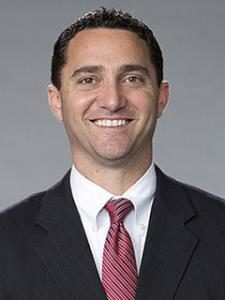Kaiser Permanente's report in NEJM AI details insights from a large-scale rollout of ambient AI clinical documentation technology.

Improving emergency care for patients with chest pain
Kaiser Permanente’s new diagnostic criteria reduced hospital admissions, stress testing without increasing risk of heart damage
Emergency physicians at Kaiser Permanente hospitals in Southern California reduced hospital admissions and cardiac stress testing by using new criteria to assess the level of risk patients with chest pain have for subsequent cardiac events.
The Emergency Department assessment was implemented across Kaiser Permanente Southern California and has improved the quality and efficiency of care for these patients, according to an article published today in Annals of Emergency Medicine.

“By assessing patients who come into the Emergency Department using HEART— a measure of history, electrocardiogram (ECG), age, risk factors and troponin, a blood test that measures heart injury — we were able to avoid unnecessary hospitalizations and cardiac testing for many patients without increasing their risk of heart damage,” said Adam L. Sharp, MD, MSc, an emergency physician with Southern California Permanente Medical Group and a researcher with the Kaiser Permanente’s Department of Research and Evaluation in Southern California.
Heart disease is a leading cause of death in the United States. Chest pain — a symptom that often triggers an evaluation for suspected acute coronary syndrome, or heart attack — is the second most common reason for Emergency Department visits. These patients are frequently hospitalized for observation and cardiac stress testing, but no studies have evaluated whether this strategy improves patient health. Researchers involved in this study sought to evaluate whether the HEART tool could successfully identify which patients required observation and further testing, and which ones could be allowed to safely go home.
Researchers used information in the electronic health records of more than 65,000 adult patients evaluated for suspected acute coronary syndrome at 13 Kaiser Permanente Emergency Departments in Southern California between May 2015 and June 2017.
The study examined outcomes in 3 periods:
- May 2015 to May 2016 before HEART was established
- May 6, 2016 to June 3, 2016, during the transition to HEART
- June 2016 to June 2017 after HEART was implemented
The outcomes studied were hospital admissions, non-invasive cardiac stress testing, and whether patients died or had heart attacks within 30 days of the Emergency Department visit.
Researchers found that, among patients who went to the Emergency Department with chest pain, there was:
- A 4.4 percent decrease in hospital admissions and cardiac stress testing after implementation of HEART.
- No increase in missed heart attacks in patients after HEART was implemented, which was already below the nationally reported missed rate.
- No increase in the rate of death in patients after HEART was implemented.
“Our program to decrease hospitalization of patients with low-risk chest pain builds upon previous efforts to improve care by avoiding unwarranted, potentially harmful treatments such as reducing the prescriptions of antibiotics for acute sinusitis and reducing diagnostic tests such as CT imaging after head trauma,” Dr. Sharp said.
Research funding for this work was provided by the National Heart, Lung, and Blood Institute of the National Institutes of Health.
In addition to Dr. Sharp, other researchers were Aileen S. Baecker, PhD; Ernest Shen, PhD; Chengyi Zheng, PhD; Aniket Kawatkar, PhD; and Michael K. Gould, MD, MS, of the Kaiser Permanente Department of Research & Evaluation; Rita Redberg, MD, of the University of California, San Francisco, Department of Cardiology; Ming-Sum Lee, MD, PhD, of the Los Angeles Medical Center, Division of Cardiology, Kaiser Permanente Southern California, Los Angeles; Maros Ferencik, MD, PhD, of the Knight Cardiovascular Institute, Oregon Health & Sciences University in Portland; Shaw Natsui, MD, MPA, of the University of California, Los Angeles, Department of Emergency Medicine; and Benjamin C. Sun, MD, MPP, of the Center for Policy Research–Emergency Medicine, Department of Emergency Medicine, Oregon Health & Sciences University, in Portland.
This is reprinted from the KP Share site.


